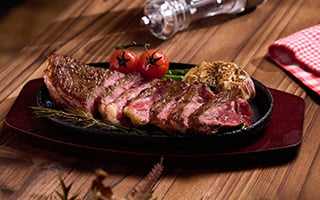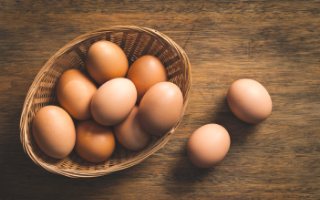Cheers with Sake ‧ The Craft of Sake Brewing

The Craft of Sake Brewing
No matter the style of sake, the essential elements are sake rice, water and yeast. Brewing a sensational bottle of sake requires the combined efforts of artisans, countless procedures, time and experience.
Let’s ask the three key people involved in sake brewing – the farmer, the rice representative and the brewery owner – to tell us their secrets.
The Three Main Elements of Sake
Rice, water and yeast – slight variations in each element determine the taste, mouthfeel, aroma and style of the sake. The ingredients may appear simple, but the roles they play are vital.
Shaping the Taste of Sake
Sake Rice
Sake rice is different from table rice, with larger, softer grains, and a milky-white, starchy core that easily breaks down into sugar during fermentation.
There are over 120 varieties of sake rice. The best-known and most popular ones are Yamada Nishiki, Gohyakumangoku, Miyama Nishiki and Omachi. Newcomers in recent years include Sakahomare and Yukimegami. The Japanese government has even identified rice that’s suitable for sake brewing in each prefecture.
Determining the Style & Texture of Sake
Water
Water is the backbone of sake, making up 80% of it.
Colourless and tasteless it might be, but water is critical to the body and texture of sake. Both soft and hard water can be used to make it; soft water gives a milder, sweeter flavour, while hard water gives a more robust, dryer flavour, as it’s rich in minerals.
There are more stringent requirements for water used to brew sake than for regular drinking water. Minerals like iron and magnesium can affect its quality, so most breweries invest heavily in obtaining high-quality water for their sake. The unique qualities of the water of a particular region contribute to the distinctive characteristics of a sake.
The Secret Behind the Aroma of Sake
Yeast
Yeast also plays a crucial role in sake brewing: this micro-organism is the hero of the fermentation process.
When brewing sake, the enzymes in rice koji break down the starch into sugar, and yeast turns the sugar into alcohol. The yeast will then be harvested as so-called “shubo” and used to produce more sake yeast. Through the passing of time, rice koji, steamed rice and water will turn into sake.
There are more than 100,000 kinds of yeast in nature. In the old days, brewers could only use those that naturally exist in the brewery, producing sake that could be of uneven quality or even spoil. Nowadays, yeasts can be extracted using scientific methods, and the Brewing Society of Japan even stores and breeds various kinds of yeast, allowing sake brewers to choose the best ones for them.
Rice Polishing
The rice significantly affects the taste and quality of the sake. It’s mainly brewed using the core of the rice grain, where starch is concentrated. The outer husk, germ and other unwanted parts are polished away, and the remainder is known as “seimai-buai”.
A low rice polishing ratio means more of the outer layer of the grain is removed, leaving a starchy core that goes through low-temperature fermentation to create a fragrant, delicate sake.
A high polishing ratio signifies that more nutrients from the outer layer of the grain are kept, meaning the yeast uses more energy to ferment, resulting in a more complex body.
The rice polishing requirement varies according to the type of sake:
Junmai Type
No distilled alcohol

Junmai Daiginjo
Polishing ratio 50% or below

Junmai Ginjo
Polishing ratio 60% or below

Junmai
Honjozo Type
Added distilled alcohol

Daiginjo
Polishing ratio 50% or below

Ginjo
Polishing ratio 60% or below

Honjozo
Polishing ratio 70% or below
Different types of sakes each have their unique characteristics. The popular “Dassai 23”, for instance, boasts a 23% rice polishing ratio, meaning 1kg of sake rice is polished down to 230g. Although the polishing is done by machine, it is still very costly as it takes a long time to complete – a 70% rice polishing ratio takes about 11 hours.
It’s not always a case of the lower, the merrier, though: sometimes a low polishing ratio will also shave away the original character of the rice. Some sake brands use advanced technology to maintain a rice polishing ratio that is just right, aiming to produce sake with a pleasant aroma, texture and umami flavour.
Sake Storage
To maintain the quality of sake, it’s important to store it correctly.
When brewing process comes to an end, the pasteurisation begins, known as “hiire” in Japanese, to bring fermentation to a halt. Sake is usually heated at around 65°C, a relatively low-temperature pasteurisation to stabilise the yeast and prevent it fermenting further.
When temperature-controlled transport was not available in the past, sake had to be heat-treated twice, once before storage and once before bottling.

Ageing is currently a hot topic in the sake world. Sake ages as time passes. Some breweries even age their sake at ice temperature as the yeast is almost in a dormant state, result in a sake with an elegant flavour and a mellow texture, while maintaining its original freshness and delicacy.
On the other hand, some breweries and sake enthusiasts opt for ambient temperature ageing, taking advantage of the unique characteristics of the sake to develop richer flavours and body. Sakes aged at ambient temperature often exhibit a golden hue, with increased sweetness and acidity over time, resulting in distinctive aged flavours. Nowadays, many breweries store their sake in cellars for extended periods before releasing them to the market.
Ultraviolet rays and heats affect the quality of sake, which is why most sake bottles are dark. Be sure to store sake in a cool, dry place away from direct sunlight. Follow the instructions on the label and refrigerate if required.
Unlike wine bottles that have wooden corks, sake bottles usually have a metal cap, which can taint the flavour if the bottle is kept on its side.
Sake usually has no expiry date, but the taste may change after opening as it oxidises. It is recommended to store it in the fridge after opening and consume it as soon as possible.
























































